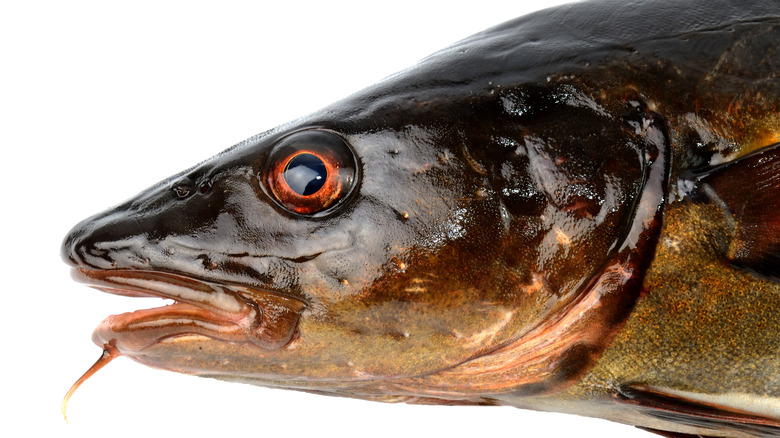Why You Should Definitely Be Eating More Fish Heads
If you think the title of this article is nothing more than clickbait, keep reading; we're pretty sure you'll be hooked. It's entirely possible that, so far, your diet has not included fish heads, no matter how much you might love broiled halibut or smoked salmon. But the fact is that there's pretty much every reason to eat more fish heads: They contain some of the most succulent and delicious meat (and other edible bits), are fantastic for making broth, dramatically reduce food waste, and are a key part of selecting the freshest fish at the market.
Let's start with the delectable parts. Fish heads contain what are called "cheeks," the fishy equivalent of a chicken's "oyster": tender, tasty, and often overlooked. Just behind the head are what are known as fish collars — a firm, richly-flavored cut that doesn't make it into a typical filet. In fact, the meat that makes up a filet represents only a fraction of a fish's total weight and excludes a significant portion of the animal that's worth eating.
Eat more, waste less
Wasting food is unnecessary, and throwing out perfectly delicious parts of an animal doesn't make much sense. For these reasons, nose-to-tail fish dining has become a restaurant trend — people are happily eating fried fish-skin crackers and monkfish liver terrine. (This is, of course, in the same way that everything old becomes new again: British fish head pie has a long history and heroic backstory.) It's not unusual for more than half of every fish to get thrown away. This includes the tails (which contain a good amount of meat), the offal (which includes not only the liver but also roe and milt), and the bones — a prerequisite to any good consommé or stock.
As for the heads themselves, there's more to love than just the cheeks and collars. People also eat the eyeballs, brains, throat, and tongue. Some cultures even smoke a whole fish head until it's crispy and eat that.
Keep your head on
Beyond its many culinary uses, it's in your best interest to buy your fish whole anyway — it's the best way to tell that what you're getting hasn't gone off. A fresh fish will have clear eyes, fresh smell (avoid anything that smells fishy or bleachy), firm flesh, and red gills. Pre-cut fish filets give no such clues to their freshness, at least until you get them home and apply the sniff test, and if they're spoiled, the best you can hope for is having to make alternate dinner plans.
Whole fish are more economical, too — as long as you're willing to utilize more than just the filets. It's easy to learn how to break the fish down and find a way to use every little bit. (Roasted cod head, by the way, is quite the delicacy, containing as it does the cheeks, collar, and tongue. And talk about presentation!) So make the most of what a tasty fish has to offer, and start with the head.


